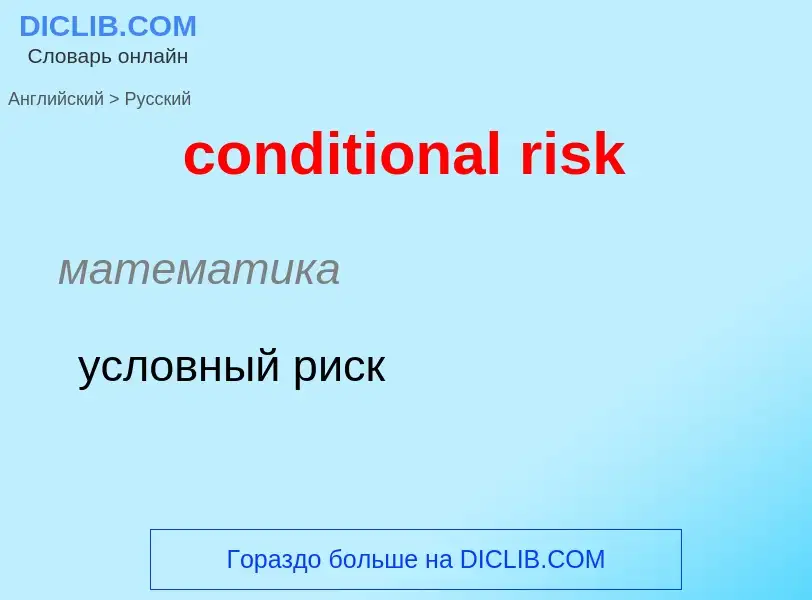Traduzione e analisi delle parole da parte dell'intelligenza artificiale
In questa pagina puoi ottenere un'analisi dettagliata di una parola o frase, prodotta utilizzando la migliore tecnologia di intelligenza artificiale fino ad oggi:
- come viene usata la parola
- frequenza di utilizzo
- è usato più spesso nel discorso orale o scritto
- opzioni di traduzione delle parole
- esempi di utilizzo (varie frasi con traduzione)
- etimologia
conditional risk - traduzione in russo
математика
условный риск
общая лексика
условное наклонение
Definizione
Wikipedia
Expected shortfall (ES) is a risk measure—a concept used in the field of financial risk measurement to evaluate the market risk or credit risk of a portfolio. The "expected shortfall at q% level" is the expected return on the portfolio in the worst of cases. ES is an alternative to value at risk that is more sensitive to the shape of the tail of the loss distribution.
Expected shortfall is also called conditional value at risk (CVaR), average value at risk (AVaR), expected tail loss (ETL), and superquantile.
ES estimates the risk of an investment in a conservative way, focusing on the less profitable outcomes. For high values of it ignores the most profitable but unlikely possibilities, while for small values of it focuses on the worst losses. On the other hand, unlike the discounted maximum loss, even for lower values of the expected shortfall does not consider only the single most catastrophic outcome. A value of often used in practice is 5%.
Expected shortfall is considered a more useful risk measure than VaR because it is a coherent spectral measure of financial portfolio risk. It is calculated for a given quantile-level , and is defined to be the mean loss of portfolio value given that a loss is occurring at or below the -quantile.

